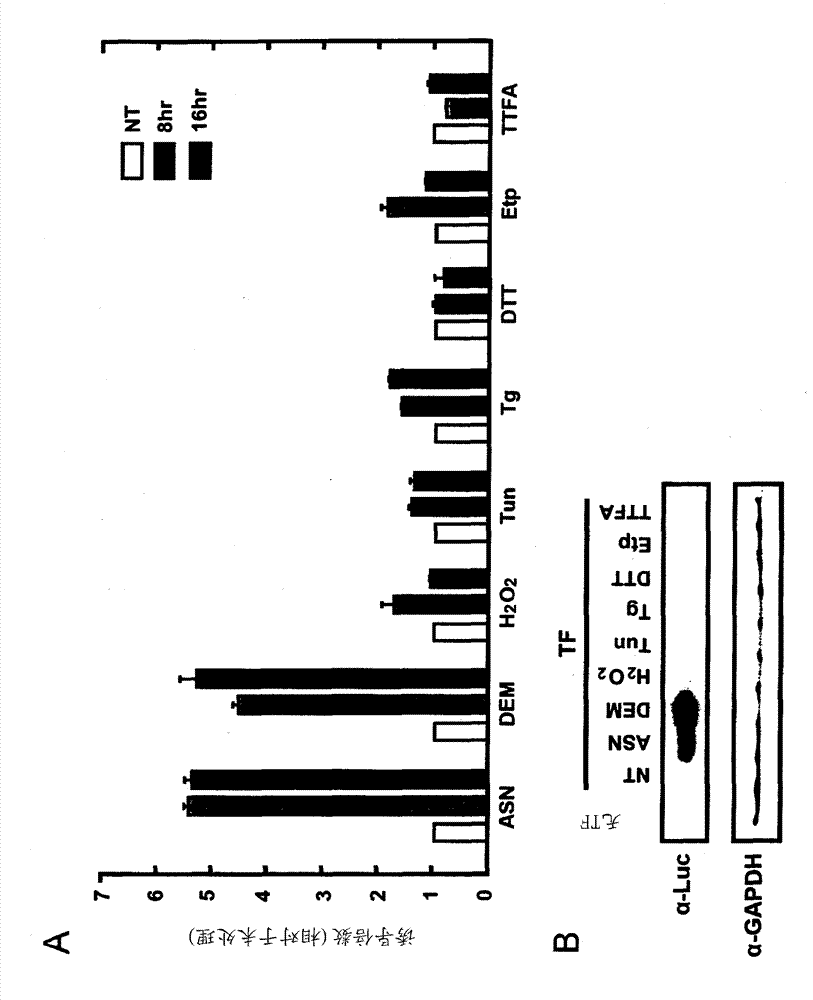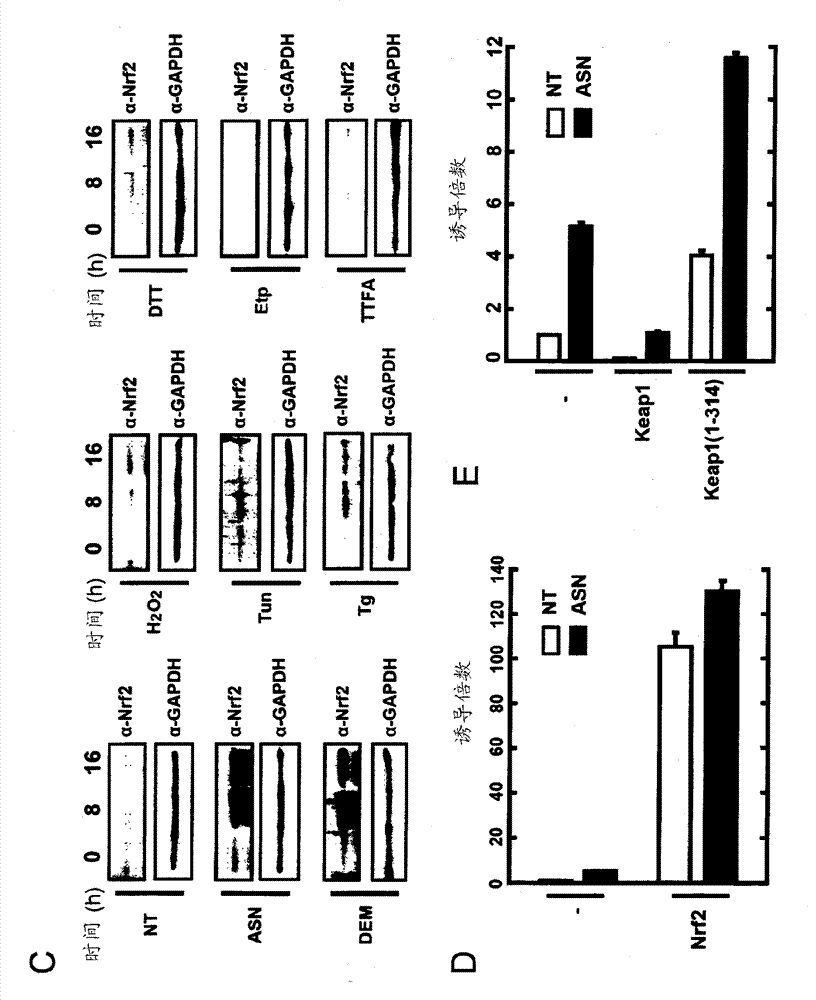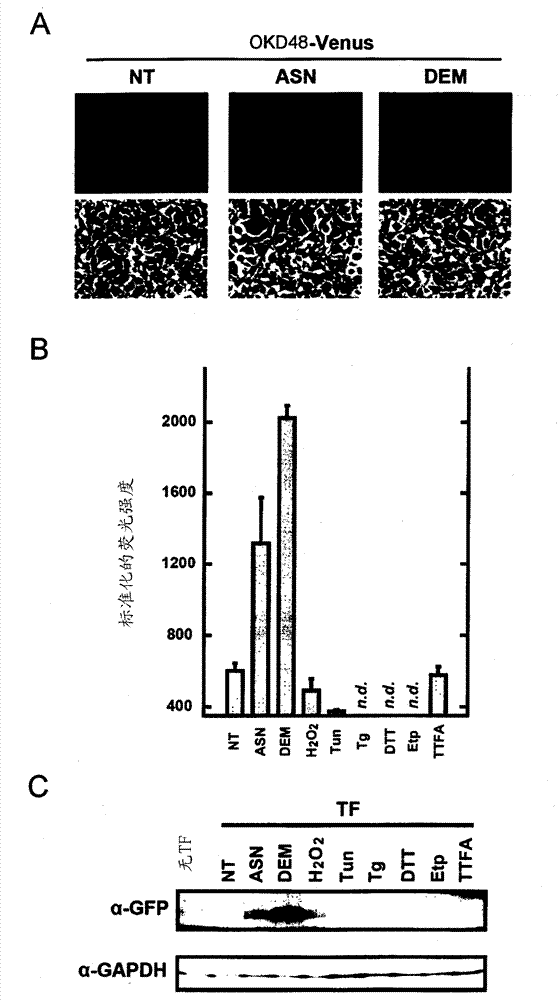Nucleic acid construct for expressing oxidative stress indicator and use thereof
A nucleic acid construct, oxidative stress technology, applied in material analysis by observing the effect on chemical indicators, compound screening/testing, and analysis by chemically reacting materials, etc. The device and reporter protein are not suitable for individual observation, and the sensitivity is insufficient, so as to achieve the effect of improving the S/N ratio.
- Summary
- Abstract
- Description
- Claims
- Application Information
AI Technical Summary
Problems solved by technology
Method used
Image
Examples
preparation example Construction
[0127] For the production of transgenic animals (excluding humans), for example, nuclear transfer method, differentiated pluripotent cells such as ES cells and iPS cells can be used.
[0128] In the present specification, "animal" includes animals other than humans, preferably birds, mammals, primates such as monkeys and chimpanzees, rodents such as mice, rats, and hamsters, cattle, goats, sheep, etc. useful as livestock animals. Artiodactyla such as pigs, Carnivora such as dogs and cats, birds such as chickens, etc.
[0129] The nuclear transfer method includes, for example, introducing the nucleic acid construct or vector of the present invention into the genome of a somatic cell such as a fibroblast, and then microinjecting the nucleus removed from the cell into an enucleated fertilized or unfertilized egg ( If it is an enucleated unfertilized egg (after applying electrical stimulation), it is transplanted into the uterus or fallopian tube of the adoptive mother to allow it...
Embodiment 1
[0165]
[0166] [Construction of plasmid]
[0167] To prepare p(3xARE)TKbasal, the ARE fragment amplified by PCR (derived from the mouse GSTYa promoter; ACTAGTACTAGTGGAAATGACATTGCTAATGGTGACAAAGCAACTTTTCTAGA (SEQ ID NO. 14); binding restriction sites are indicated in bold) was digested with SpeI-XbaI and self-ligated , to form a 3-time repeat fragment, and then inserted into pTKbasal with XbaI-SpeI sites. The XbaI-SpeI site is located at the 5' position of the TK basal promoter. Will encode people Nrf2( figure 1 1-93, 1-433, full-length (full-length) cDNA was amplified by PCR, and inserted into p(3xARE)TKbasal (or Image 6 pTKX). The cDNA encoding luciferase (GL4) was PCR amplified with a 1×Flag tag at its 3′ end and inserted into p(3xARE)TKbasal-hNrf2(1-433) with XhoI-NheI sites. The obtained p(3xARE)TKbasal-hNrf2(1-433)GL4-Flag was used as the OKD48-Luc plasmid. The GFP type, ie, p(3xARE)TKbasal-hNrf2(1-433)-Venus-Flag, was prepared by the same method and used as the O...
PUM
| Property | Measurement | Unit |
|---|---|---|
| strength | aaaaa | aaaaa |
Abstract
Description
Claims
Application Information
 Login to View More
Login to View More - R&D
- Intellectual Property
- Life Sciences
- Materials
- Tech Scout
- Unparalleled Data Quality
- Higher Quality Content
- 60% Fewer Hallucinations
Browse by: Latest US Patents, China's latest patents, Technical Efficacy Thesaurus, Application Domain, Technology Topic, Popular Technical Reports.
© 2025 PatSnap. All rights reserved.Legal|Privacy policy|Modern Slavery Act Transparency Statement|Sitemap|About US| Contact US: help@patsnap.com



